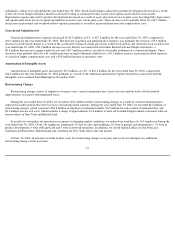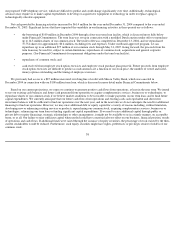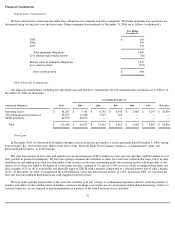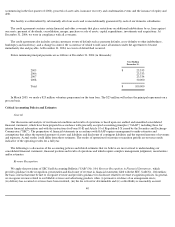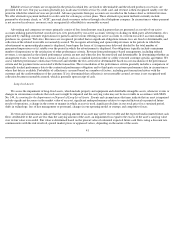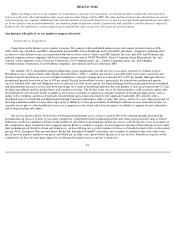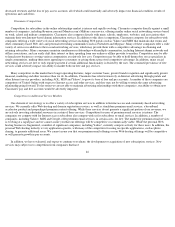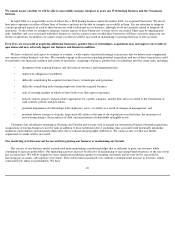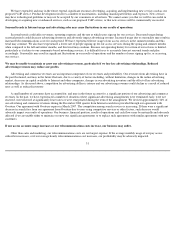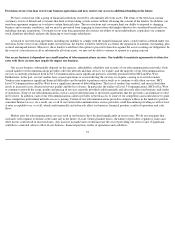Classmates.com 2004 Annual Report Download - page 45
Download and view the complete annual report
Please find page 45 of the 2004 Classmates.com annual report below. You can navigate through the pages in the report by either clicking on the pages listed below, or by using the keyword search tool below to find specific information within the annual report.
inherent in the two approaches include: projected future cash flows (including timing); discount rate reflecting the risk inherent in the future cash
flows; perpetual growth rate; determination of appropriate market comparables; and the determination of whether a premium or a discount
should be applied to comparables. Most of the foregoing assumptions are made based on available historical information.
Income Taxes
Income taxes are accounted for under SFAS No. 109. Under SFAS No. 109, deferred tax assets and liabilities are determined based on
differences between the financial reporting and tax basis of assets and liabilities and are measured using the enacted tax rates and laws that will
be in effect when the differences are expected to reverse. A valuation allowance is established when necessary to reduce deferred tax assets to
the amount expected to be realized. In determining the need for a valuation allowance, we review both positive and negative evidence pursuant
to the requirements of SFAS No. 109, including current and historical results of operations, the annual limitation on utilization of net operating
loss carryforwards pursuant to Section 382 of the Code, future income projections and potential tax-planning strategies.
Legal Contingencies
We are currently involved in legal proceedings, certain of which are discussed elsewhere in this Form 10-K. We record liabilities related to
pending litigation when an unfavorable outcome is probable and we can reasonably estimate the amount of loss. We have not recorded liabilities
for certain pending litigation because of the uncertainties related to assessing both the amount and the probable outcome of those claims. As
additional information becomes available, we continually assess the potential liability related to all pending litigation. While we currently
believe that the liabilities recorded on our balance sheet are sufficient to cover pending litigation for which an unfavorable outcome is probable
and the amount of loss can be reasonably estimated, the outcome of litigation is inherently uncertain, and there can be no assurance that such
estimates will be accurate.
Recent Accounting Pronouncement
In December 2004, the Financial Accounting Standards Board ("FASB") issued SFAS No. 123 (revised 2004). This statement replaces
SFAS No. 123, Accounting for Stock-Based Compensation , and supersedes Accounting Principles Board ("APB") Opinion No. 25, Accounting
for Stock Issued to Employees
. This statement requires that the cost resulting from all share-based payment transactions be recognized in the
financial statements. This statement establishes fair value as the measurement objective in accounting for share-
based payment arrangements and
requires all entities to apply a fair-value-based measurement method in accounting for share-based payment transactions with employees except
for equity instruments held by employee share ownership plans. This statement also establishes fair value as the measurement objective for
transactions in which an entity acquires goods or services from nonemployees in share-based payment transactions. This statement uses the
terms compensation and payment in their broadest senses to refer to the consideration paid for goods or services, regardless of whether the
supplier is an employee. SFAS No. 123 (revised) becomes effective in the September 2005 quarter and will have a material adverse effect on our
results of operations.
At the required effective date, we will apply this statement using a modified version of prospective application. Under the modified
prospective application, this statement applies to new awards and to awards modified, repurchased, or cancelled after the required effective date.
Additionally, compensation cost for the portion of awards for which the requisite service has not been rendered that are outstanding as of the
required effective date shall be recognized as the requisite service is rendered on or after the required effective date. The compensation cost for
that portion of awards will be based on the grant-date fair value of those awards as calculated for either recognition or pro forma disclosures
under SFAS No. 123.
Inflation
We do not currently anticipate that inflation will have a material impact on our results of operations.
43




